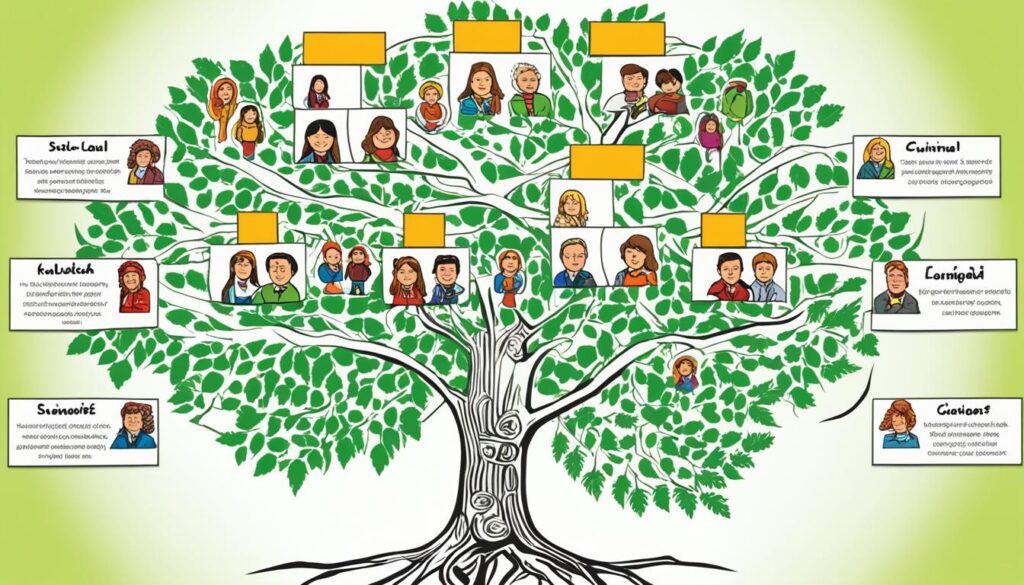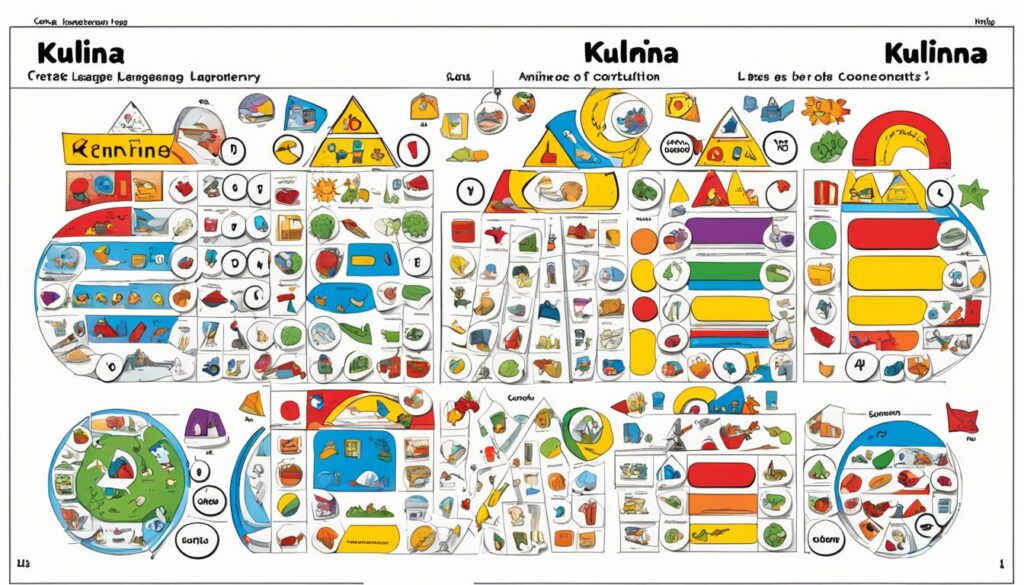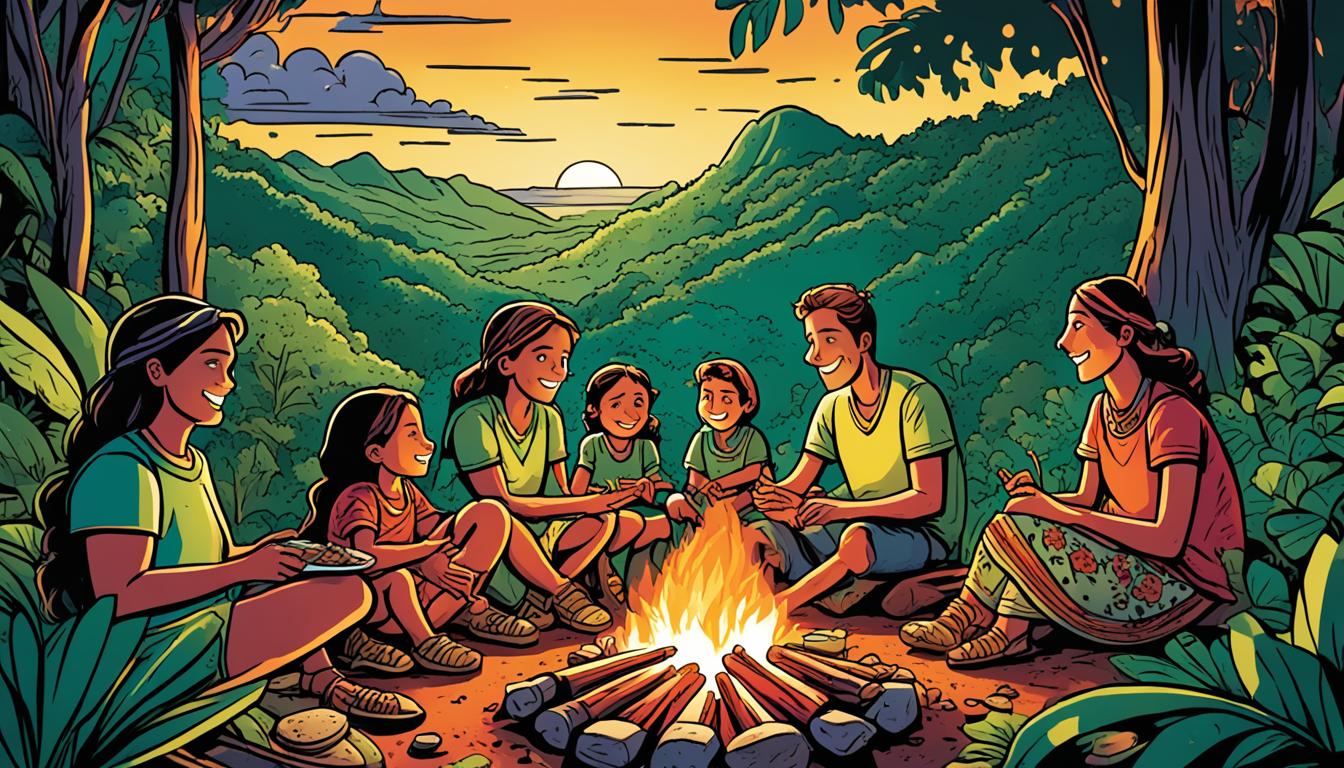The Kulina language, spoken by the Kulina tribe of Brazil and Peru, is an endangered indigenous language with only around 4,000 speakers.
History and Geography
The Kulina people have a rich history in the region of Acre and the south of the Amazon. For generations, they have established villages along the banks of the Juruá and Purus rivers, creating a profound connection with the land.
The Kulina tribe is mainly found in the states of Acre and Amazonas in Brazil, as well as the Ucayali region in Peru. Their presence in these areas has shaped their culture and language, contributing to the vibrant diversity of the region.
The Kulina language has deep roots in the history and geography of the region. However, like many other Brazilian indigenous languages, it faces challenges concerning preservation and the ongoing struggle to maintain linguistic diversity. These challenges have prompted the support of various organizations such as FUNAI (National Indian Foundation), CPI (Permanent Indigenous Council), and CIMI (Indigenous Missionary Council).
Efforts have been made to support language preservation and cultural heritage, recognizing the importance of indigenous languages in maintaining connections to ancestral traditions and fostering the preservation of indigenous knowledge.
“Language is not just a means of communication; it embodies the unique worldview, traditions, and cultural identity of a community.” – Representative from FUNAI
Preserving Cultural Identity
The preservation of the Kulina language is essential for the preservation of the cultural identity of the Kulina tribe. Language serves as a vessel for transmitting indigenous knowledge, traditions, and oral histories from one generation to the next. It is a fundamental aspect of cultural heritage and plays a crucial role in maintaining the identity and cohesion of indigenous communities.
Efforts to preserve the Kulina language go beyond linguistics and extend to the preservation of indigenous lands and the recognition of indigenous rights. By supporting language preservation, we contribute to the broader goal of fostering cultural diversity and creating a more inclusive society that values the rich heritage of indigenous peoples.
Classification
The Kulina language belongs to the Arawan language family, specifically within the Madihá dialect continuum along with Western Jamamadi and Deni. These languages share the term “madihá,” which means “people” in each language.
Kulina exhibits head-marking and agglutinative morphology, with a head-final structure. It has two noun classes, two genders, and complex agreement patterns in transitive and intransitive sentences.
Kulina Language in the Arawan Language Family
The Kulina language is a member of the Arawan language family, a group of indigenous languages found in Brazil and Peru. Specifically, Kulina is part of the Madihá dialect continuum, which includes Western Jamamadi and Deni. These languages are closely related and share linguistic characteristics.
Within the Arawan language family, Kulina is known for its distinctive features such as head-marking and agglutinative morphology. Head-marking refers to a grammatical feature where the grammatical relation to the head noun is expressed through markers attached to other parts of the sentence.
Kulina also exhibits complex agreement patterns in both transitive and intransitive sentences. Agreement in grammar refers to the relationship between different parts of a sentence, such as subject-verb agreement or noun-adjective agreement.
“Kulina belongs to the Arawan language family, specifically within the Madihá dialect continuum along with Western Jamamadi and Deni.”
| Language | Classification | Distinctive Features |
|---|---|---|
| Kulina | Arawan language family | Head-marking, agglutinative morphology, complex agreement patterns |
| Western Jamamadi | Arawan language family | Head-marking, agglutinative morphology, complex agreement patterns |
| Deni | Arawan language family | Head-marking, agglutinative morphology, complex agreement patterns |

Grammar
The grammar of the Kulina language is a fascinating aspect that showcases its unique features. As a language spoken by the Kulina tribe, it follows a subject-object-verb (SOV) word order, which differs from the more common subject-verb-object (SVO) order found in English and many other languages.
One distinguishing characteristic of the Kulina language is that it is a predominantly head-marking language. This means that it uses affixes attached to the heads of phrases to convey grammatical information. In the case of Kulina, suffixes are extensively used, while there are also a few prefixes.
Nouns in Kulina are divided into two classes and two genders. Agreement on transitive verbs depends on various syntactic and pragmatic factors. In transitive sentences, the verb agrees with the object in gender and with the subject in person and number. On the other hand, in intransitive sentences, the verb agrees with the subject in person, number, and gender.
Verb Agreement Examples:
“Hu-puhuby1sg.subj – mhuni3sg.obj” – I see him/her
“Lisu-puhuby1pl.subj – i-mhuni3sg.obj” – We see him/her
Noun Classes and Genders:
| Noun Class | Gender |
|---|---|
| Class 1 | Masculine |
| Class 2 | Feminine |
Table: Noun Classes and Genders in Kulina Language
These grammatical features contribute to the linguistic richness and complexity of the Kulina language, offering insights into the cultural and social dynamics of the Kulina tribe.
Phonology
The Kulina language exhibits a rich inventory of consonant and vowel sounds, contributing to its distinctive phonological features within the Arawan language family.
In terms of consonants, Kulina encompasses a variety of sounds, including labial, dental, alveolar, velar, and glottal stops and fricatives. These consonants play an essential role in shaping the pronunciation and overall phonetic structure of the language.
On the other hand, the vowel inventory in Kulina comprises both front and back vowels, allowing for a wide range of vocal expression. Vowels are integral to the formation of syllables and contribute to the melodic qualities of spoken Kulina.
Interestingly, certain consonant sounds in Kulina may exhibit variant pronunciations, adding further intricacy and nuances to the language’s phonetic inventory.
| Consonants | Vowels |
|---|---|
|
– Labial stops and fricatives – Dental stops and fricatives – Alveolar stops and fricatives – Velar stops and fricatives – Glottal stops and fricatives |
– Front vowels – Back vowels |

The phonetic richness of the Kulina language distinguishes it as a unique linguistic treasure, showcasing the expressive capabilities of the Kulina people.
Location and Population
The Kulina people occupy various indigenous lands in Brazil and Peru, with a significant presence in the states of Acre and Amazonas in Brazil. In Brazil, the Kulina inhabit villages located along the Juruá and Purus rivers, benefiting from the rich resources of the Amazon rainforest that sustain their way of life. The largest concentration of the Kulina population can be found in the village of Canamari. On the Peruvian side, the Kulina population is also present, although in smaller numbers.
The population distribution of the Kulina tribe reflects the challenges they face in maintaining their cultural traditions and identity. According to a survey conducted in 2002, the estimated population of the Kulina in Brazil was around 2,500 individuals. In Peru, there were approximately 500 Kulina individuals in 1998. However, it’s worth noting that these figures may have changed due to various factors over the years.
The Kulina people encounter ongoing challenges related to land rights and the preservation of their indigenous lands. They face social pressure and the threat of encroachment on their territories by illegal extraction of natural resources. These factors contribute to the delicate balance between the preservation of their cultural heritage and the demands of the modern world.
Indigenous Lands
| Country | Indigenous Land |
|---|---|
| Brazil | Forrest Preto, Itaverava, Itujupa, São Francisco, São Luiz, and Canamari |
| Peru | Ucayali Region |
Population Distribution
- Brazil (2002): Approximately 2,500 individuals
- Peru (1998): Approximately 500 individuals
“Preserving indigenous lands is vital for the sustainability and continuity of the Kulina tribe, as it guarantees their access to natural resources and enables them to maintain their cultural practices and traditions for future generations.”
Conclusion
The Kulina language is a valuable Amazonian treasure that is deeply intertwined with the cultural heritage of the Kulina tribe. However, like many indigenous languages, Kulina faces the imminent threat of endangerment due to a small number of speakers and the challenges associated with language preservation.
In order to safeguard linguistic diversity and preserve the richness of the Kulina language, concerted efforts must be made. Collaboration between indigenous communities, organizations, and initiatives is essential for supporting the revitalization and preservation of the language for future generations.
By emphasizing the importance of indigenous languages and cultural traditions, we can work towards creating a society that values linguistic diversity and promotes inclusivity. It is through these efforts and a collective commitment to preserving indigenous languages like Kulina that we can ensure the cultural heritage of the Kulina tribe and contribute to the linguistic tapestry of our world.
FAQ
What is the Kulina language?
The Kulina language, also known as Kulína, Culina, or Madihá, is an endangered indigenous language spoken by the Kulina people of Brazil and Peru. It belongs to the Arawan language family.
How many speakers does the Kulina language have?
There are only around 4,000 speakers of the Kulina language, making it a threatened language.
What are the unique features of the Kulina language?
The Kulina language has an SOV word order and three sets of alveolar affricate consonants.
Where do the Kulina people traditionally reside?
The Kulina people traditionally reside in the states of Acre and Amazonas in Brazil and the Ucayali region in Peru.
What efforts have been made to support the preservation of the Kulina language?
Organizations like FUNAI, CPI, and CIMI have made efforts to support language preservation and cultural heritage.
How does the grammar of the Kulina language work?
The grammar of the Kulina language follows a subject-object-verb (SOV) word order and exhibits head-marking and agglutinative morphology.
What is the consonant and vowel inventory of the Kulina language?
The Kulina language has a range of consonant and vowel sounds, including labial, dental, alveolar, velar, and glottal stops and fricatives.
Where can the Kulina people be found?
The Kulina people can be found across several indigenous lands in Brazil and Peru, specifically along the Juruá and Purus rivers in the states of Acre and Amazonas in Brazil and the Ucayali region in Peru.
What challenges do the Kulina people face?
The Kulina people face ongoing challenges related to land rights, social pressure, and illegal extraction of natural resources in their territories.
Why is the preservation of the Kulina language important?
The Kulina language is a valuable Amazonian treasure that plays a significant role in the cultural heritage of the Kulina tribe. Efforts to support linguistic diversity and cultural preservation are crucial for maintaining the richness of the Kulina language and ensuring the continuity of indigenous cultural traditions.
